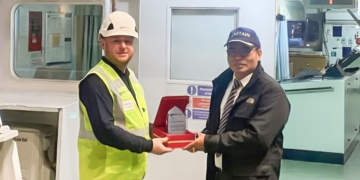UK P&I Club has published its latest Risk Focus, to promote best practices covering vessel owners and operators with tugs and barges.
According to the UK P&I Club, operators are advised to voluntarily adopt a safety management system aligned with the IMO’s ISM Code. Furthermore, certification by a recognized organization ensures the implementation of safety management and environmental protection measures.
The management system should incorporate a structured and documented set of interdependent practices, processes and procedures used by the managers and the workforce at every level in the company to plan, direct and execute activities.
The system should also encompass structured and documented practices, processes, and procedures at all levels within the company to effectively plan, direct, and execute activities.
The following example Operating Management System (OMS) Framework (copyright: the International Association of Oil and Gas Producers and IPIECA www.iogp.org) comprises two interdependent components:
- Four Fundamentals focus attention on management principles that are arguably the most important for an effective OMS – Leadership, Risk Management, Continuous Improvement and Implementation. These principles apply to every Element of the OMS to drive its success.
- Ten Elements establish a structure to organise the various components of an OMS. Every Element requires the establishment and maintenance of appropriate documentation and records.
- Refer also to IACS and classification society guidelines on the various aspects of safety and environmental protection management.

With inadequate maintenance on board, an effective management system will:
- Clearly describe inspection and preventative maintenance routines.
- Ensure a log of the inspections and maintenance work carried out, noting condition and any defects.
- Ensure equipment critical for safety or pollution prevention is identified, including minimum spare parts to be carried on board.
- Clearly describe action to be taken by crew when defects are identified or when maintenance cannot be performed in accordance with the schedule (for any reason), in particular critical equipment – including reporting and record-keeping.
With regards to incidents involving unsafe work practices or unsafe conditions, an effective management system will:
- Based on assessment of risk, clearly describe how operations are to be conducted, in particular hazardous operations.
- Provide the necessary training, familiarisation and supervision of crew – and other resources as required – to ensure crew can competently and safely execute the duties they are expected to perform.
- Promote safe work practices at all levels in the organisation and actively empower all personnel to stop a job they consider to be unsafe or inadequately managed.
- Promote the reporting of unsafe acts and unsafe conditions. Implement a programme of regular inspections and audits. Ensure an appropriate degree of investigation and cause analysis followed by implementation of corrective actions and sharing of lessons learnt – documented accordingly.































































